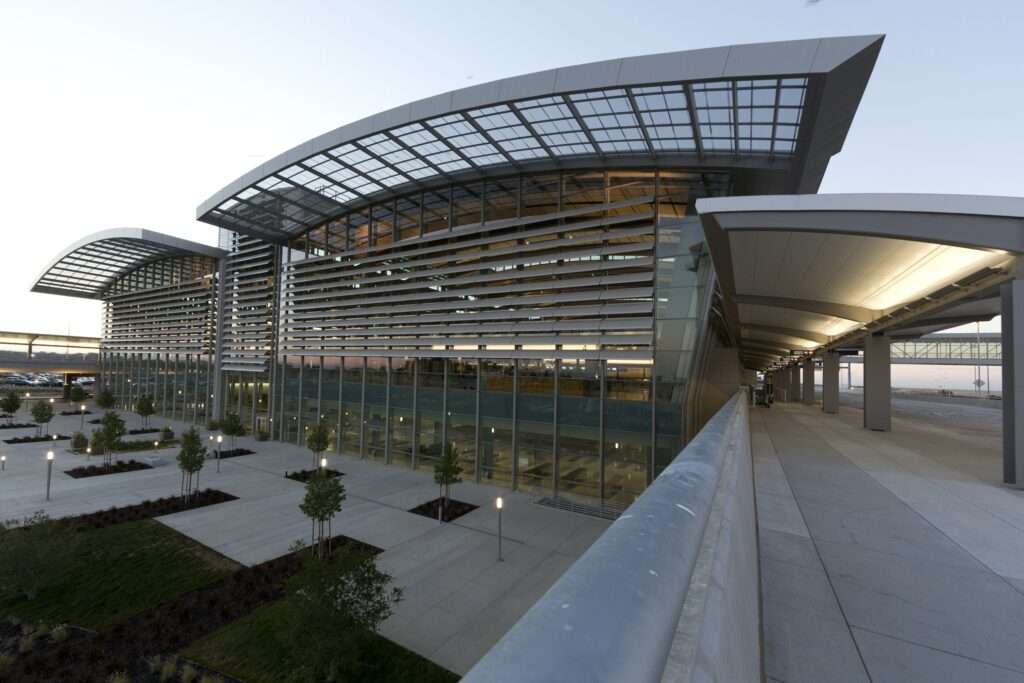Sacramento International Airport (SMF), a vital transportation hub for California‘s capital region, boasts a rich history intertwined with the city’s growth and development.
Its story begins not on the current expansive site, but at a smaller airfield known as Sacramento Municipal Airport (later renamed Sacramento Executive Airport).
Early Days: Taking Flight (1930s-1960s)
The journey commenced in 1930 when Sacramento Municipal Airport, initially called Sutterville Aerodrome, opened its doors.
This grass field served as the primary gateway for commercial air travel in the region.
During World War II, the U.S. Army Air Corps took control, utilizing it for pilot training.
After the war, the City of Sacramento regained ownership and upgraded the facility, constructing a terminal building in 1955.
However, by the late 1950s, Sacramento Municipal Airport was reaching capacity.
Increased passenger demand and limitations on runway expansion necessitated a new solution.
In 1957, a bold proposal emerged: the construction of Sacramento Metropolitan Airport (later renamed Sacramento International Airport) on a vast, nearly 6,000-acre site north of downtown.
The plan faced skepticism.
Critics deemed the location inconvenient, the size excessive, and the projected passenger numbers unrealistic.
Yet, the visionaries behind the project prevailed.
A New Era: Sacramento Metropolitan Takes Off (1967)
On October 21, 1967, Sacramento Metropolitan Airport (SMF) officially opened its doors.
It held the distinction of being the first entirely new public-use airport built west of the Mississippi.
Replacing Sacramento Municipal as the region’s primary commercial airport, SMF initially boasted a single 8,600-foot runway and service from five airlines: Pacific, PSA, United, Western, and West Coast.
This new facility proved its worth quickly.
Passenger numbers surpassed the initial estimate of 750,000 within the first year, exceeding one million.
SMF’s spacious design allowed for future expansion, paving the way for a period of significant growth.
Growth and Development: The 1980s and 1990s
The 1980s witnessed a construction boom at SMF.

New facilities like the in-flight catering center (1980), an FAA Flight Inspection Field Office (1985), a second air cargo facility (1985), and a crucial second runway (1987) were built.
The arrival of the second runway was marked by a grand spectacle – the landing of a Concorde supersonic transport (SST).
Airlines also diversified during this period.
America West, Continental, Morris Air, Northwest, and American Eagle joined the initial carriers, offering passengers a wider range of travel options.
The 1990s saw the completion of Terminal A (designed by Dreyfuss & Blackford Architects) in 1998, along with a consolidated rental car facility, further enhancing passenger convenience.
Challenges and Adaptation: The New Millennium
The new millennium brought unforeseen challenges. The events of September 11, 2001, significantly impacted the aviation industry.
SMF, like airports nationwide, implemented stricter security measures and weathered a period of decreased passenger traffic.
However, SMF also experienced significant growth during this time.
The early 2000s saw the construction of Terminal B, offering additional gates and amenities.
New airlines were welcomed, and existing carriers expanded their routes.
A focus on sustainability also emerged.
In 2010, SMF became the first major airport in the world to achieve Level 3 carbon neutrality accreditation, showcasing its commitment to environmental responsibility.
A Look Ahead: The Future of Sacramento International Airport
Today, Sacramento International Airport continues to evolve.
Terminal A underwent a substantial renovation in 2016, and ongoing projects focus on further streamlining passenger experience and expanding capacity.
SMF also plays a crucial role in the region’s economy.
It serves as a major job creator, supports local businesses, and connects Sacramento to domestic and international destinations.
As the Sacramento region continues to grow, SMF is poised to remain a vital transportation hub, fostering economic development and connecting people to the wider world.
From its humble beginnings as a grass field to its current status as a modern airport, Sacramento International Airport’s history reflects the dynamism and growth of California’s capital city.
As SMF navigates the future, it carries the legacy of innovation and a commitment to serving the Sacramento region for generations to come.

Click the banner to subscribe to our weekly newsleter.

Click the photo to join our WhatsApp channel so then you can stay up to date with everything going on in the aviation industry!









